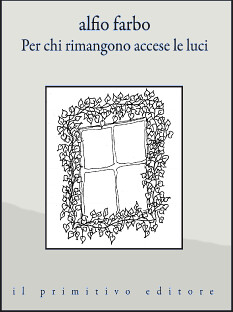This one posted down here is the first of many barbaric haikus you’re going to read in this blog. I call them «barbaric» (if there is a god of literature, I hope he will forgive the carduccian reference) because they don’t follow the traditional Japanese metric made by 5-7-5 syllables for three verses, but they are instead free metric, also if they often tend to be a short-long-short sequence.
Following the 5-7-5 rule because «it is so in Japanese» is not interesting for me. Following it because it is believed that a fixed form is useful, could still be a more interesting choice and it gains my respect (although I still believe that it would be better to find a more suitable form for the Italian language). I have chosen instead not to follow it, but to search a different affinity with the tradition of this genre. This affinity should be all in the way of writing haikus: haiku is firstly an interior search – although so very few people seems to remember it – which is aimed to the suspension of the sense we usually attribute the subject (intellectual or emotive). This suspension is reached through an extreme and disarming imaginative simplicity, by finding, in the extremely precise detail of nature, the empty container of the inner, and outer, emptiness. It is really a practice of empting, and for this I tried to avoid the always western temptation of reintroducing the sense by those means we all well know: metaphor, symbol or also the relativism of modern allegory; (that rhetorical language which the true haiku always dismisses and never causes). I felt, however, that it was possible to handle, with extreme cure, those instruments, though always rhetorical, which go instead in the direction of the signifier, of the ‘empty sign’: onomatopoeic, alliteration, assonance, and a kind of ‘large’ analogy too. Here, but everywhere else too, it will be mainly up to the reader not to fill again what was already emptied during the writing.
A good thematic affinity with the tradition of the genre is generally maintained, if it’s true that you find these haikus grouped by season (but you are not going to find regularly the kigo, the canonical reference to the season); I’m also interested in giving space to the human world (which I don’t necessarily feel in contradiction with nature) and to modernity, and this means that a part of inspiration comes from the city, from modern metropolis, especially in a fifth section of haikus titled «Out of season».
Of course, form is the container of emptiness, and we know how important it is in the extremely ritual Japanese culture, which is permeated of Zen. But it is useless to imitate what you are not; I am still a western – a gaijin, as they would say – and if I disguise myself perfectly as an oriental man, I surely look ridiculous.
I’m sorry for the length of this post, but this clarification was necessary. For the brevity we have the haikus.
Originally posted in Italian on January 17, 2008 at 18:19








No comments:
Post a Comment